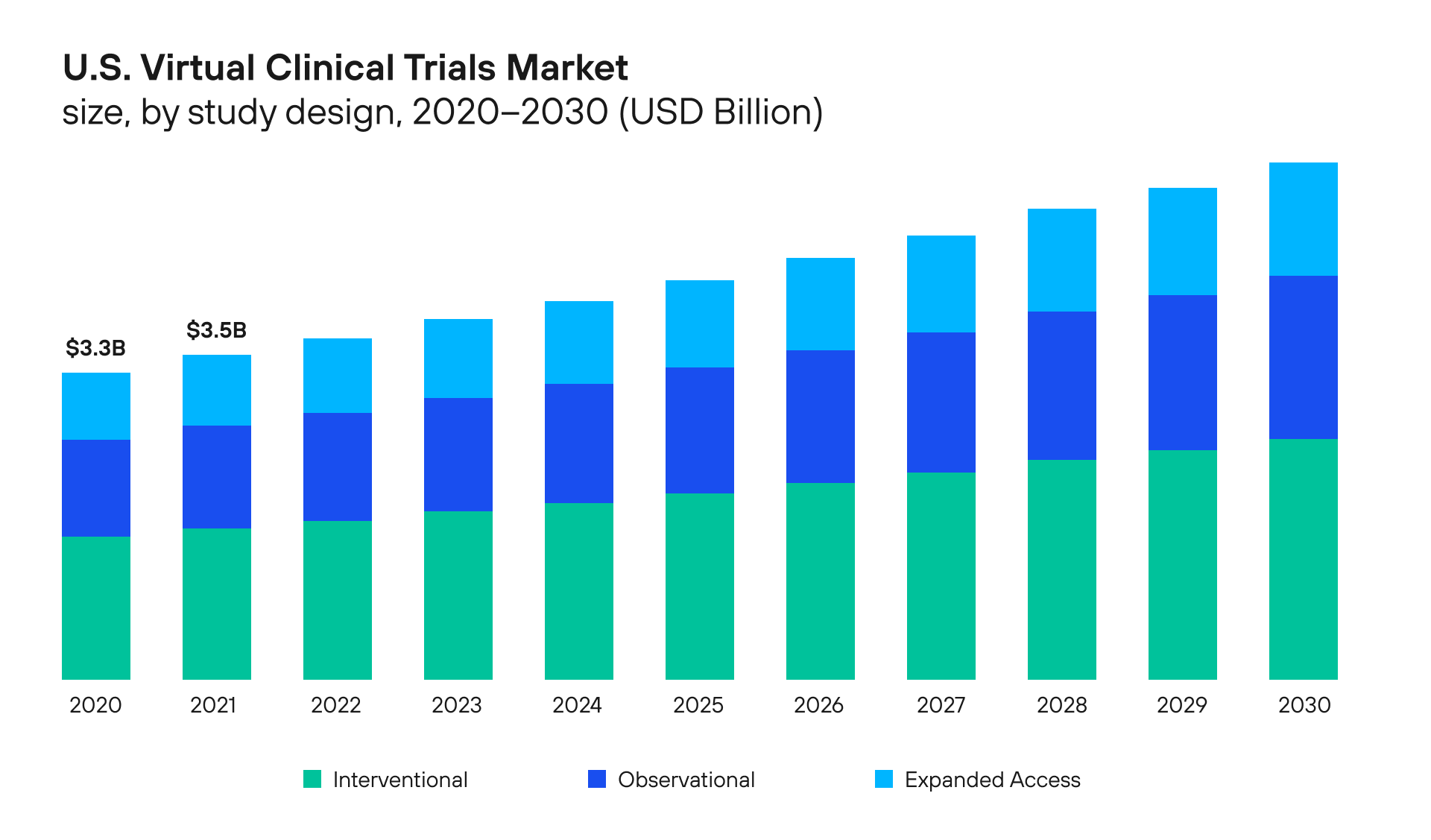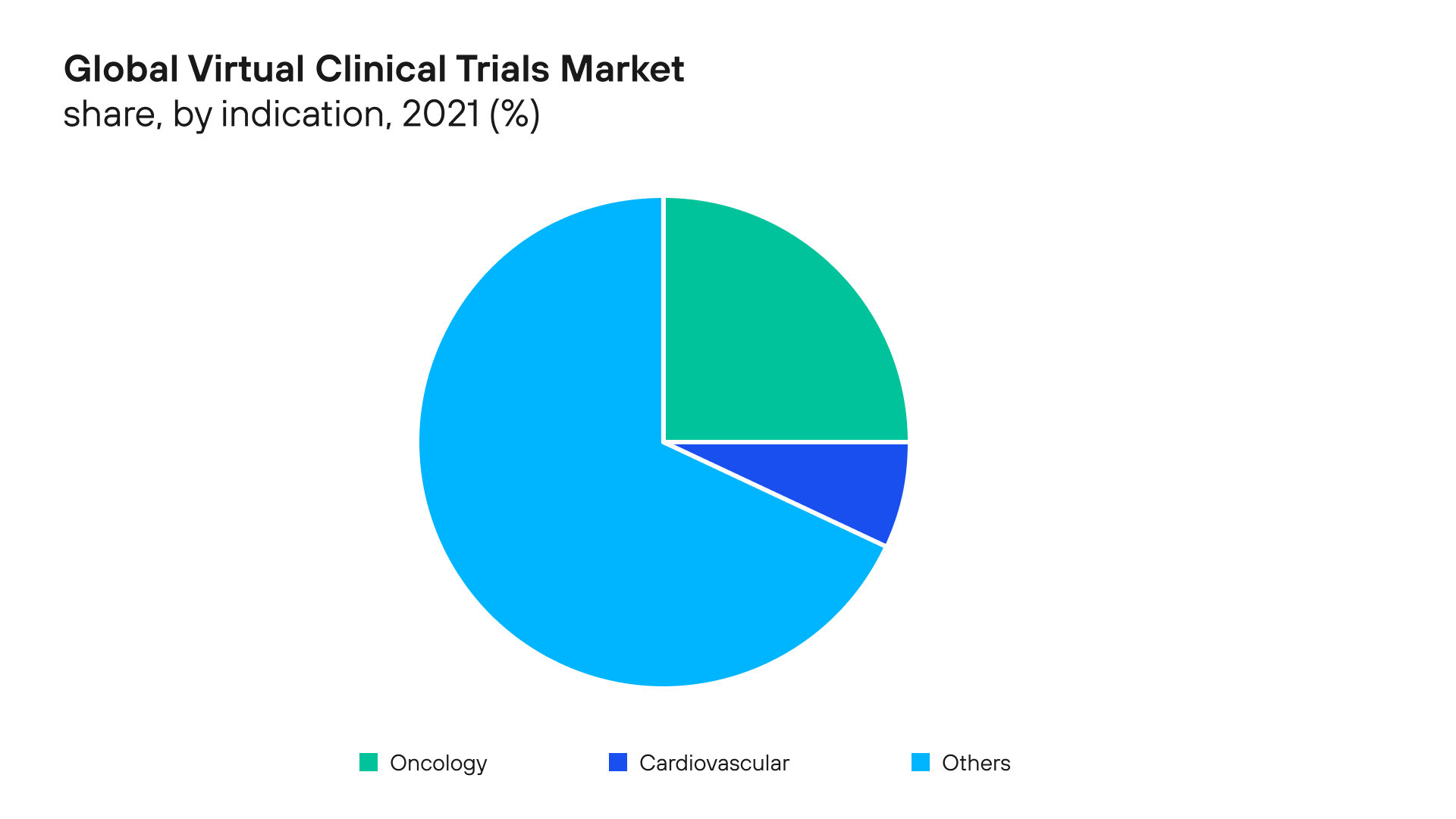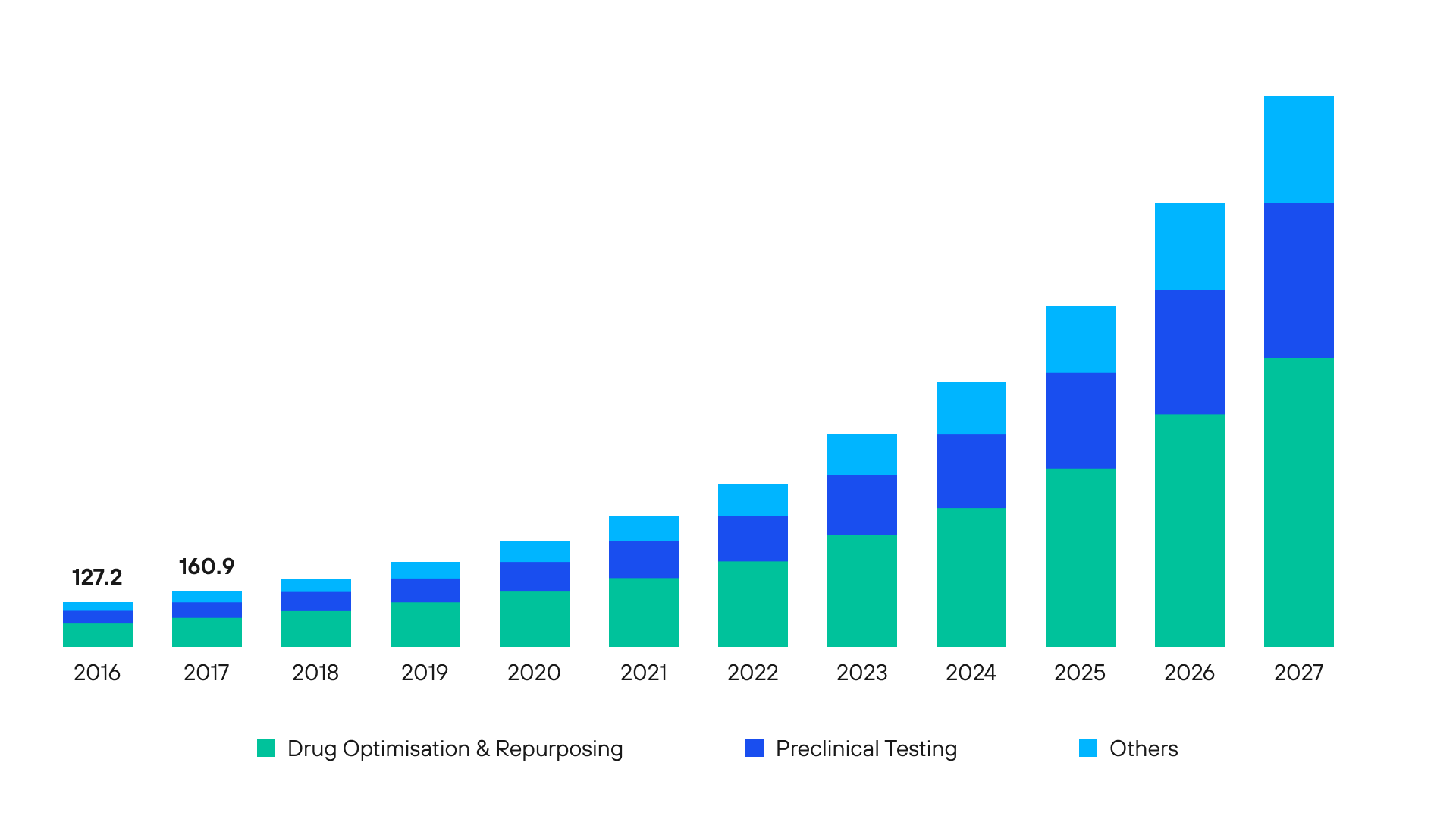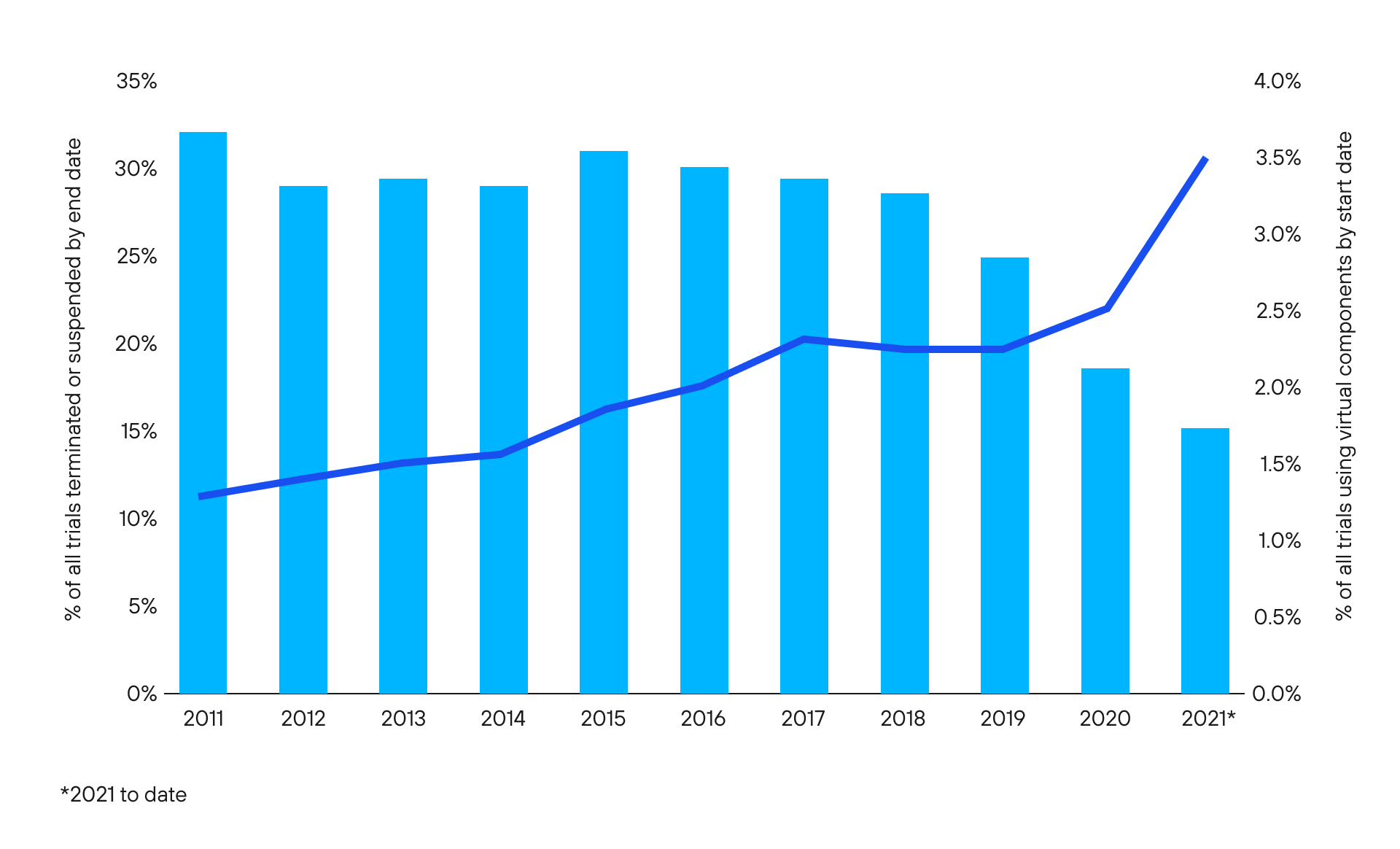Biopharma trends 2024, midyear update: what is relevant as of June-July 2024
Discover the latest trends in biopharma for 2024, including AI-driven drug discovery, personalized medicine, and other technologies transforming the industry.

Find out about the potential role of in silico experiments in the future of pharma.
In recent years, new ways of translating innovations in information technology into practical applications within the pharmaceutical industry have been found. For instance, recently developed approaches toward simulation and modeling opened new horizons in biomedicine. In silico experiments represent such innovations, the way of refinement, and in particular substitution of human and animal experimentation.
Here, we’ll explore some major insights about in silico trials’ future in pharma, highlighting its coupling with AI and considering its current clinical applications.
In silico experiments, also known as virtual trials, are used to develop medical products and devices through computer simulations. However, the technology is still in the germination stage and its current capabilities do not make fully simulated clinical trials possible. Yet, the future developments and integration of technologies like AI and ML can help raise such barriers.
More specifically, the in silico approach utilizes a patient-specific model while forming virtual cohorts used to test the safety and efficacy of new drugs. Additionally, the technology can be employed in envisioning a virtual set of patients to reduce the cost and expand the outreach of clinical trials. Essentially, there is a growing market for the technology’s application. The market breeds new technologies in pharma, which is expected to translate into safer and more effective drug discovery and drug repurposing.
These elements are among the few key aspects driving the development of in silico trials in pharma.
Integration of computational instruments into pharma demonstrates the rate of improvement of successful clinical trials. Constantly, companies are developing software and platforms that support the development of medical equipment and promote safer drug discovery. Yet, all these innovations have specific prerequisites.
First and foremost, the virtual clinical trials market is showing immense growth. Market Watch suggests that by 2028 the global in silico clinical trials market will be worth over $4.5 billion compared to its current value of $2.8 billion. Besides, in the United States, it is expected that the market will experience a compound annual growth rate of 5.7 percent from 2022 to 2030 (see Fig. 1). Figure 1. U.S. Virtual Clinical Trials Market Size
Figure 1. U.S. Virtual Clinical Trials Market Size
The COVID-19 pandemic created the prerequisites for further investment in R&D, which also affected in silico clinical trials. Also, the development of the technology coincided with increased digitization in pharma and healthcare. These are the key reasons driving the adoption in recent years of the in silico method.
Understanding its clinical applications is vital within the motivity of the in silico development. These are the areas in which the compounded growth will translate into:
In silico methods have already shown major practical benefits in oncology. Grand View Research illustrates the growing demand for the technology in oncology and similar segments. Besides, it is anticipated that the application of innovations in this area will contribute to the maximum share of the market, which is about 25 percent (see Fig. 2). Figure 2. Global Virtual Clinical Trials Market by Application
Figure 2. Global Virtual Clinical Trials Market by Application
With a wide range of clinical applications, there is a direct path for the technology’s development. It not only brings in revenue, but offers many other benefits.
In silico clinical trials come with a package of positive outcomes:
It is crucial to understand that virtual and computational methods help avoid many bureaucratic and financial hurdles. Moreover, virtual trials are much safer than conventional clinical experiments. It is a cheap and secure way of discovering and repurposing drugs.
In silico clinical trials do not offer all the solutions. At this stage of the technology’s development, several potential downsides require dealing with:
Luckily, the aforementioned aspects are issues that can be resolved. One can expect that the current challenges will be addressed with the further development of in silico technology and incorporation of appropriate guidelines into regulatory policies.
Integration of AI into pharma is an ongoing process. There is a growing demand for the technology, as well as many success stories already showing the positive results of bringing AI and ML into the forefront of the industry, and drug discovery is one example.
Grand View Research indicates that the global AI in drug discovery market size was valued at about $473.4 million in 2019. There is an expected compound annual growth rate of 28.8 percent from 2020 to 2027 (see Fig 3.). Figure 3. Global AI in Drug Discovery Market Size
Figure 3. Global AI in Drug Discovery Market Size
Essentially, AI can be used in a number of ways to improve drug discovery. The approach entails constructing computer systems emulating human problem-solving through learning behavioral patterns. When coupled with in silico, one can receive sophisticated modeling simulation methods that help process and analyze data at extremely rapid rates. Already three years ago the report by leading intelligence agency Deep Pharma Intelligence suggested that about 260 pharmaceutical vendors have effectively used AI tools in drug discovery.
Many companies are designing AI-based tools that others can use in pharma. Artificial Intelligence (AI) enabled drug discovery companies firms like Atomwise, Berg, Standigm, and DeepMatter already utilize AI in their in silico trials. Looking into the matter deeper, AI in virtual trials can be used for the following:
In addition, in the context of actual drug production, AI coupled with in silico plays an integral role in digital biomanufacturing. In essence, it means data management, automation, and data modeling. We see that AI integrated with virtual trials helps to replace laboratory experiments with in silico simulations that design digital twins of bioprocesses and study them without the expense of conventional methods.
In silico trials have already demonstrated their ability to bring positive shifts in clinical experiments. Yet, the prospects are even greater, with many believing the technology will revolutionize pharma through several breakthroughs.
One can expect that in silico will be coupled with AI to provide patient-centered personalized medicine. Professionals envision the modeling of patient-specific treatment plans and medical devices that will meet the needs of every individual consumer. All the calculations and calibrations can be done through simulations. There is an increasing number, up to 3.5 percent growth, of virtual trials in direct patient care (see Fig. 4.).  Figure 4. The Use of Virtual Trains in Improved Patient Care
Figure 4. The Use of Virtual Trains in Improved Patient Care
Furthermore, in the future the in silico technology could be used to enable high-precision medicine for a range of complex diseases. Using computer modeling techniques, clinicians can test a myriad of treatment responses across an entire population in order to devise the most effective and efficient in silico approach to treating a disease.
Finally, in silico medicine will become a standard for medical technologies relying on computational modeling and imaging. Based on the AI and ML used within the technology, one can anticipate accurate predictive models to emerge. They will be used in physiology and therapeutic processing. It means that before some diseases or conditions affect a particular population, professionals will be able to model its impact and devise the most effective counter-measures. If developed now, such a capability might have been a game-changer in the context of COVID-19.
It is safe to say that in silico experiments have a bright future in pharma. The development of AI and ML offers a range of instruments that can be adopted in virtual trials. As a result, the breakthrough is bringing a safer, cost-effective, and easier approach to drug discovery and drug repurposing. In addition, it will go even further and is expected to shift toward highly personalized medicine and the ability to understand the impact of diseases without the need to experience them.
If you have any further questions on the role of in silico in pharma, feel free to contact us.
If you want to explore the digital solutions for pharma brought by Avenga, click here.
* US and Canada, exceptions apply
Ready to innovate your business?
We are! Let’s kick-off our journey to success!